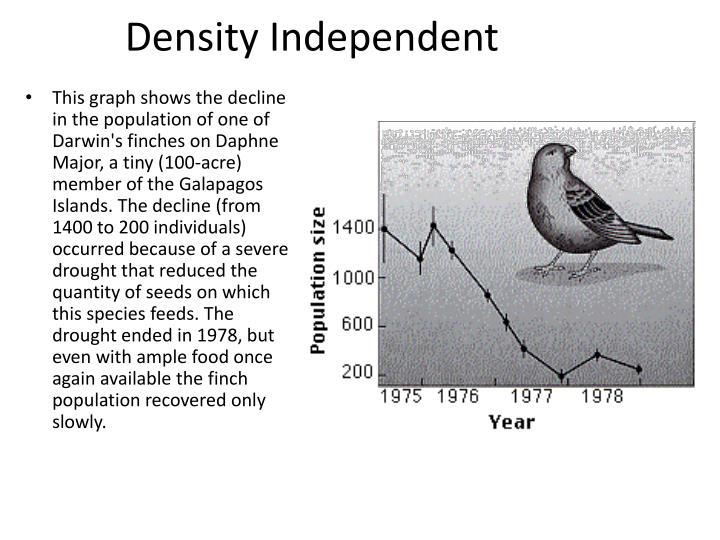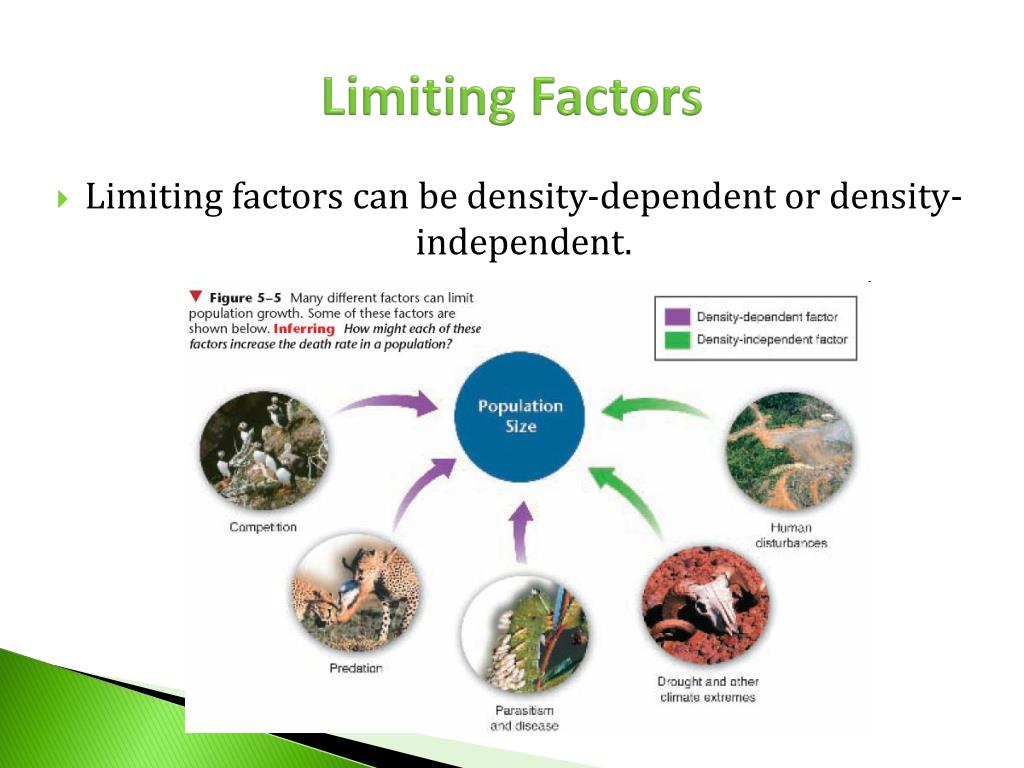
These factors vary in different zoning districts. density-independent limiting factor predator-prey relationship Disease Predation Parasitism Competition limiting factor. A limiting factor that affects all populations in similar ways, regardless of population size, is called a(an). The allowable residential square footage of the building is divided by the density factor to determine the allowable number of units. Density-Independent Factors (page 127) 12. However the main factor is the availability of food.ĭensity Factor is a zoning term for the maximum allowable number of residential units one can develop on a property. There are many types of density dependent limiting factors such as availability of food, predation, disease, and migration.

The density dependent factors are factors whose effects on the size or growth of the population vary with the population density. Cycles of growth and decline limit some predator and prey populations.Īlso asked, what are 3 density independent limiting factors? Likewise, what is the difference between density independent and density dependent factors with examples Density-independent factors, such as weather and. Some commonly used examples include temperature, floods, and pollution.īeside above, what can be limited by density independent factors? Density- independent factors, such as rainfall, drought, or pollution, can also limit populations, but they seldom regulate populations because they act irregularly, regardless of the population's density. Density-independent limiting factors affect populations no matter what their size is density-dependent ones affect the population only when the number of organisms reach a certain level.

In this regard, what are examples of density independent factors?Įxamples of Density- Independent Factors Most density- independent factors are abiotic, or nonliving. For example, some diseases spread faster in populations where individuals live… Therefore, III only (floods and drought) is an example of density-independent factor. These factors are usually physical factors of the environment like Disasters Flood and drought Earthquake etc. There are two types of limiting factors: density-dependent factors and density-independent factors. Part A-Density-dependent and density independent factors Read the description below each image and determine whether it is an example of a density dependent density Independent factor Drag the correct label below each Image Labels can be used more than once eset Help der Independent doende Food availability decreases as population increases An. Density-independent Density-independent factors are those factors that are not dependent on the density of the population to affect them. In contrast, the effects of density- dependent factors intensify as the population increases in size. In ecology, a limiting factor is a resource or environmental condition that limits the size of the population. Density dependent factors are those that regulate the growth of a population depending on its density while density independent factors are those that regulate population growth without depending on its density.Density- independent factors, such as weather and climate, exert their influences on population size regardless of the population's density. What is the difference between density dependent and independent factors?ġ. Density-independent factors typically are non-living things that impact a population, such as when the temperature outside falls due to a cold front moving through or when pollution reduced air. The category of density independent limiting factors includes fires, natural disasters (earthquakes, floods, tornados), and the effects of pollution. Feedback mechanisms include competition for limited resources, cannibalism, and predation rates that vary with density. Small populations are particularly at risk of being wiped out by density independent limiting factors. Likewise, what are some examples of density independent limiting factors? The allowable residential square footage of the building is divided by the density factor to determine the allowable number of units. Likewise, what is a density factor? Density Factor is a zoning term for the maximum allowable number of residential units one can develop on a property. Some commonly used examples include temperature, floods, and pollution.

An example of such a factor is an earthquake, which will kill all members of the population regardless of whether the population is small or large.Ĭonsequently, what are three examples of density independent factors?Įxamples of Density- Independent Factors Most density- independent factors are abiotic, or nonliving.

Density- independent factor Any factor limiting the size of a population whose effect is not dependent on the number of individuals in the population.


 0 kommentar(er)
0 kommentar(er)
